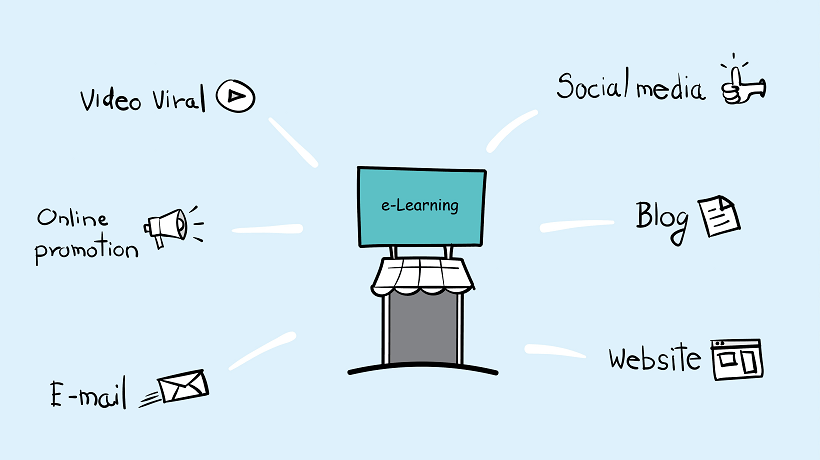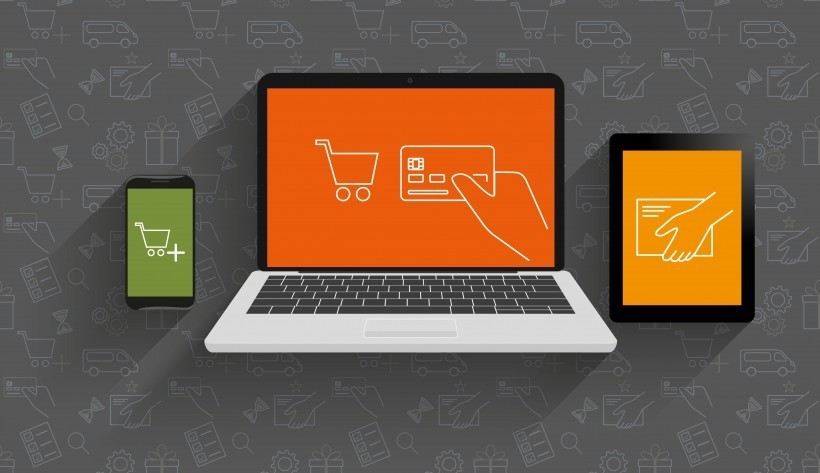How To Sell Your eLearning Program To Learners
Once you launch your program, learners should be queuing up to take it, right? Not exactly. I hate to break it to you, but the adage “build it and they will come” doesn’t hold water anymore. Not that it ever did, except perhaps in the movie Field of Dreams, where it originated. To sell your eLearning course, the course needs to be marketed like any product or service. Else, how will learners know that it exists, and that it will be useful to them. Also, with time becoming as precious a commodity as money, people are unwilling to invest their attention in something that they don’t find worthy or interesting.
The first Macintosh, when it was initially released back in 1984, was a great product, no doubt. Game changing. World beating. But if Steve Jobs had thought that his work was over once the product was released, it may not have changed the world as much as it actually did. The company went all out with its advertising, coming up with an iconic campaign that continues to be talked about even today.
So yes, all products need marketing.
When it comes to eLearning implementation at the workplace, there are 3 reasons to create a marketing campaign:
- To let your learners know that you have a program, and that it’s something useful to them.
- To attract them to your content, using marketing techniques.
- To nudge them towards desired behaviors, before and after they have viewed the content.
Here are a few ideas to get started with a marketing campaign to sell your eLearning program:
1. Create A Brand Identity And A Byline
Nothing sells like a shared identity that makes it easy for people to refer to and talk about. And, the more your branding is in line with the identity of the program and the organization, the more likely it is to stick. If your program uses humor and tongue-in-cheek language to get the message across to learners, then use the same tone in the brand name as well. Whatever it is, make the branding unique, easy to remember, and attention grabbing. And a byline just adds to the aura of the brand. Which of these bylines do you not remember?
- Just Do It.
- Got Milk?
- A Diamond is Forever.
It doesn’t take a lot of effort to recall the brand name, and what it stands for, once you see the byline.
2. Get To Know Your Audience
Understand what matters to your learners. Find out what makes them tick, and where they typically hang out. If a detailed analysis was done upfront, then you should have detailed learner profiles, and maybe even personas, drawn up. Even if not, you should have some idea of the learner profile that you defined before you started designing the course. You can use this information for targeting your messages specifically to your audience, instead of spraying your message all over the place.
3. Create A Campaign
There’s a lot to borrow (read ‘steal’) from marketing folks all around us. If you think of the best advertisements and viral videos, and distill them down to their skeletons, you will find – stories. Stories that emotionally hook us, and draw us into the product before we’ve even realized it. You may not have the budget and resources to create a series of full-blown ads, but there’s no reason you can’t tell a good story.
What are your favorite ad campaigns? And why do they work for you? Try to break them down into their smaller elements, and put these elements together to create your own campaigns. This post from HubSpot describes 12 of the best marketing campaigns of all time. Worth a read.
A campaign can consist of infographics, interactive PDFs, posters, videos, animations, magazine inserts, microsites, mobile apps, webinars, expert interviews, dedicated social media channels, and even targeted emails. Use whatever works for your situation and your learners. Just make sure to keep the messaging (both in terms of content and visuals) consistent throughout these elements.
4. Continue the Campaign Trail
This is probably where your campaign’s resemblance to a marketing activity would come to an end. While ad campaigns are mostly about generating awareness and drawing users in, your campaign needs to sustain well after people have gone through the program.
Because, after all, getting program views is not our end goal. It’s what happens afterwards -learners successfully transferring their new learning back in their jobs, and continuing to do so- that matters most to us. This the reason we are in the learning business - to change behavior.
There are a couple of specific reasons for continuing the campaign:
- Helping them remember key points they learned in the program.
- Motivating them to exhibit (and continue exhibiting) the desired behaviors.
Several of the elements you designed for the campaign can come in handy at this stage.
- Infographics and posters pasted all over the place reminding learners of the key points they learned in the program.
- Videos and animations doing the same thing.
- Magazine inserts that nudge learners to take action on the desired behaviors.
- Microsites and social media channels that have a community of learners sharing and discussing success and failure stories.
- Mobile apps that let people play games or take quizzes on the concerned topic.
- Expert interviews and webinars answering questions from learners.
- Email blasts with targeted messages.
These, I think, are the main pointers for creating a marketing campaign when planning for eLearning implementation at the workplace. What are yours? Please share them in the Comments section below.
Learnnovators released an eBook titled The Ultimate Guide To Successful eLearning Implementation At The Workplace. If you would like to discuss any of the above pointers, or if you need assistance with implementing eLearning at your workplace, do get in touch at [email protected].
Related articles:
1. The Ultimate Guide To Creating An eLearning Evaluation Plan
2. 10 Considerations For Selecting An eLearning Vendor-Partner
3. 9 Steps To Defining A Workplace eLearning Strategy That Works
4. Free eBook: The Ultimate Guide To Successful eLearning Implementation At The Workplace









